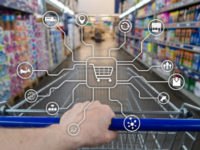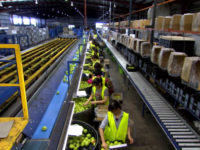
Throughout history there are countless examples of innovations that instilled lasting change in the world, and just as many that failed to do so. Whether it’s an idea, technology, tool or a toy; all introductions to our lives enter society at a certain pace that is contingent on any number of factors. Those factors will determine the time taken to reach market saturation, but the process is always the same. Slow adoption at first, as a small minority, the Innovators receive and spread the idea. After that, the Early Adopters begin to bring it to the mainstream and the rate of adoption quickly accelerates and which, the Early Majority cottons on and the rate of adoption peaks. It’s at this point growth continually decelerates as the Late Majority and finally, the Laggards cave in and the idea hits its saturation point.

In spite of early objections about its button-less interface, fragility and daily-charge battery life, the general consensus is that the smart-phone has only just reached saturation point – some 13 years after the launch of the iPhone. That said, while reaching saturation point took a surprisingly long time, the smart-phone became embedded into society well before that, and for as long as we can recall, it has been a vital part of our everyday life.
But what if adoption is forced by extraordinary circumstances?
We are currently experiencing something unprecedented with the COVID-19 pandemic. The threat it poses to our health is news to no-one, and neither is its impact on the way of life for every one of us. In every corner of the globe, there isn’t one individual whose day today was the same it was 2 weeks ago. In order to prevent the spread, we are forced to change daily habits and do things as we never have before, essentially squeezing the diffusion of innovation to incredibly short timeframes. In other words, if our lives depended on it, the smart-phone theoretically could have hit saturation point in a few weeks.
En masse, in just a few short weeks we have changed so much:
Group chat apps – We’re social creatures, and thanks to apps like House Party and Zoom, no lockdown will change that. New social distancing measures and closed pubs mean revellers are taking the party in-house and sharing their beverages virtually. Are we drinking less as a result? Right now, no-one can say for sure, but it’s completely possible the new acceptance of drinking drinks at home [sort of] alone, for a much cheaper price than the local bar, could lead to increased consumption.
Undoubtedly, when the bars open again, the people will come and IRL house parties will strike up all over the planet. However, the longer we continue to socialise digitally, the more ingrained and accepted it’s likely to become in society and a new at-home drinking occasion will be established.
Hand sanitizers – To say we use it like never before is an understatement. Any restroom attendant could confirm that a month ago, some people didn’t even wash their hands after going to the bathroom. Today, every exit is accompanied by a squirt of the sanitiser. In fact, that basically happens every time we enter or exit any room. After this crisis is behind us, we will certainly ease off on the current level of diligence, but the likelihood of this habit abating completely is very low. Hand sanitisers are now a fundamental part of our personal hygiene and health and will remain that way.
Cooking at home – Businesses all over have been forced to find ways to allow their staff to work from home, whether they felt ready or not. At some point, we’ll all be returning to the office, but even then the business world will inevitably have increased levels of comfort with their staff working remotely. As a result, billions around the world are now and will continue to be afforded several hours a day back at home and in the kitchen. What new passions for cooking might be renewed over this lockdown? It’s highly likely many workers look to maintain their culinary habits, “punching-in” from the study more and more even after the lockdown.
Online food delivery (meal-kits) – If indeed we do re-discover an appreciation for the home-cooked meal but are finding ourselves in the office more than allows for one, delivered meal-kit services will find themselves in an enviable sweet-spot. With increased demand for cooking but less supply of time to do it, the likes of Marley Spoon and Hello Fresh would see a boon in their growth trajectory.
Online food delivery (restaurant) – That said, this won’t erase the demand for restaurant-quality fare. For many, the preference has always been to go out and ensure someone else does the dishes. According to a poll IRI conducted in 20191, 43% of us don’t use online food delivery apps at all! The majority of these Laggards won’t be able to maintain that claim after the conclusion of the COVID lockdowns have ended and Deliveroo and UberEats will enjoy a much wider user base, hooked on the convenience of their service.
Online shopping more – Much like online food delivery, online shopping is a slippery slope. According to Australia Post2, about three quarters of us bought something online in 2018. That figure was most likely higher in 2019, and will certainly skyrocket now, when leaving the house is a hazard to public health. Woolworths and Coles know this, and are aiming to ramp up their supply chain to meet the increased demand, and many (including many of the long-standing Laggard holdouts) will never look back. Brick-and-mortar retail is set for yet another blow.
Coffee at home – Every day billions of coffees are sold on the way to work and during meetings. Now with the vast majority of those café loyalists stuck indoors for the time-being, there is little choice but to switch to in-home coffee-making. This will supercharge the adoption of percolators and especially capsule machines. For the 12 months to March 2020, only 20% of shoppers3 bought coffee capsules, indicating there are a lot of homes that are prime candidates to pony up their savings from the daily latte on a new Nespresso machine. When you consider the cost of these appliances ranges from $80 to $800, new adopters of the coffee-pod life will almost feel obliged to ensure it remains part of their daily routine, even after their favourite café is back to brewing as usual.
Long-life milk – In March, may shoppers hoarded essentials, incorrectly assuming supply of consumer goods would become an issue during the COVID-19 crisis. Along with rice, pasta and toilet paper, long-life milk was another stockpiling staple of choice. With the influx of new or once-lost shoppers to the segment, how many of them enjoyed the benefits of the ambient alternative to fresh milk? If the quality of the product was able to impress its latest recruits, the category might find itself with a boost in demand beyond the mad stash of mid-March. If not, it will be back to the usual role for long-life milk, a backup plan to the finer fresh option.
Cereal for breakfast – The oft-criticised millennials who chose to switch their cereal for smashed avo have found themselves in a slight dilemma due to the lockdowns. While you can attempt to re-create the brunch specialty at-home, it is just not the same without that fresh-baked sourdough. As such, the good old cereal we grew up with is finding its way back into our bowls. Depending on how long one has strayed from the category, they may find it has changed. With its recent renaissance into a more sophisticated and health-conscious space, many may re-discover the humble breakfast and find a renewed and lasting love for cereal.
The New Normal
This will all end at some point and we will all be free to go about our lives as we please once more. Inevitably, when that happens there will be a chaotic maelstrom of people visiting bars, cinemas, restaurants, once again enjoying the beloved activities of which they’d been deprived. That said, it cannot be argued that such a monumental event in history won’t change us. Almost 8 billion of us will have gone through a prolonged period of change where our ways of life has been flipped on its head. Some of the adjustments to our daily routine will have been endured, and others appreciated. So while normalcy will return, it will be different. It will be felt in all industries but especially in FMCG.
With more of us working from home, the route-to-consumer will change. It will be vital for retailers and suppliers to understand the new touchpoints with the shopper. It will be equally important to anticipate which products shoppers will see new value in and which have decreased in relevance. There will be winners and losers in the new normal. Now is the time to prepare.
IRI are closely monitoring the COVID-19 situation and are here to help by keeping you informed with ongoing research reports as the situation progresses. Visit our COVID-19 Content Hub here to learn more.
Rick Colella, Senior Consultant joined IRI in 2015 and brings with him extensive experience in the FMCG market. His passion is to understand shopper psychology to deliver true value and insight to his clients.
Sources:
- IRI QuickPoll Survey, March 2019, “Which online takeaway delivery services have you used in the last 3 months?”
- Australia Post 2019 eCommerce Industry Report https://auspost.com.au/content/dam/auspost_corp/media/documents/inside-australian-online-shopping-ecommerce-report.pdf
- IRI ShopperPanel, National Panel, MAT to 01/03/20












